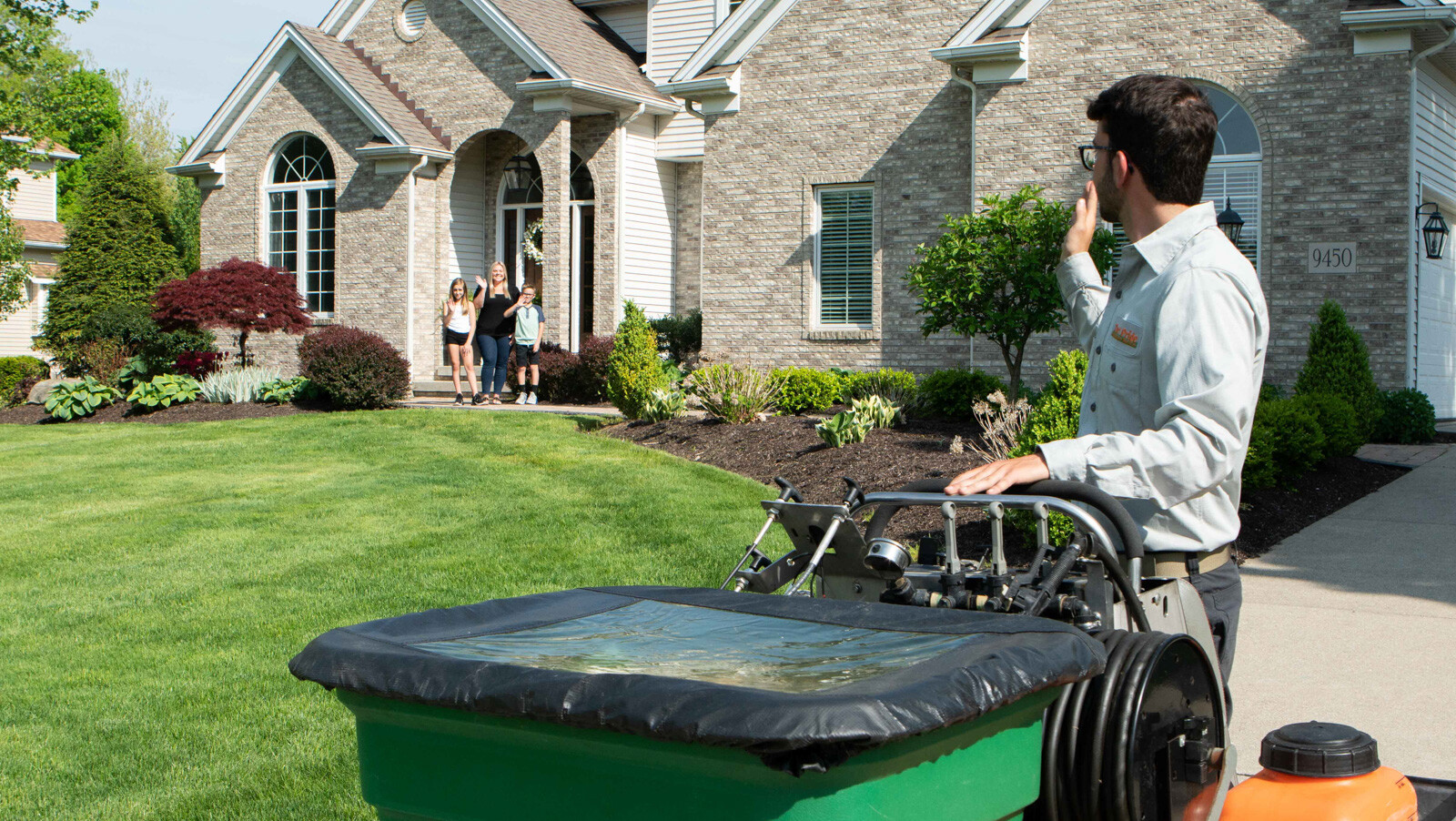
How Many Lawn Applications are Needed in Northeast OH?
When it comes to taking care of your lawn, you want to do what’s best to keep it looking great and adding curb appeal to your Northeast Ohio property.
But sometimes figuring out what you should do is challenging.
You don’t want to do too little and find your lawn is suffering in the middle of a hot summer, and you don’t want to do too much and feel like you’re constantly taking care of your grass. You might be asking yourself, “How many lawn treatments do I really need?”
/TurfPrideSpring2022(WebOptimized)-420.jpg?width=5168&height=2912&name=TurfPrideSpring2022(WebOptimized)-420.jpg)
We get it. Lawn care is a science. And there is a proper plan of attack that can keep your grass healthy and happy.
Let’s talk about how many lawn applications are needed for a typical Northeast Ohio lawn to ensure it receives the nutrition and maintenance it needs for good health.
How Many Lawn Treatments Per Year in Northeast Ohio
While you might think lawn care is just a once or twice-a-year touch base, it’s actually a bit more than there. There is an ideal lawn care schedule in Northeast Ohio that you should follow to ensure your lawn receives what it needs throughout the year.
There are various pieces to the lawn care puzzle, and making sure you receive all of them can deliver that perfect complete picture of grass in good health.
/TurfPrideSpring2022(WebOptimized)-382.jpg?width=5464&height=3070&name=TurfPrideSpring2022(WebOptimized)-382.jpg)
Here we’ll review some essential lawn treatments, so you can be sure you know what you’re getting and that you’re not neglecting anything important for your lawn.
How Many Lawn Treatments Do I Really Need?
When you go into the hardware store, you might see their lawn care section advertise a four-step program. But that may only be one component, such as fertilization. This type of program neglects other important lawn care treatments like winterizer, grub prevention, and preemergent weed control.
Realistically, you want a lawn care professional on your property every 4 to 6 weeks because that keeps eyes on your grass, enabling your technician to catch any problems before they become worse. For instance, if you don’t have anyone on your property for 8 weeks or more, that can give chinch bugs or billbugs a chance to do some serious damage. It can also give weeds a chance to spread and become harder to control.
/TurfPrideSpring2022(WebOptimized)-332.jpg?width=5168&height=2912&name=TurfPrideSpring2022(WebOptimized)-332.jpg)
In fact, the ideal lawn care program will have 6 applications with grub prevention being a seventh.
Why Ending Lawn Care Treatments Early Neglects An Important Part of Lawn Health
You might be tempted to cut your lawn care schedule in Northeast Ohio short. Maybe you notice growth slows in late August, for instance, and you think your job of taking care of your lawn is done.
This is not the case.
Shortening this program or picking and choosing pieces is similar to ignoring advice from your doctor. Say your doctor gives you antibiotics or a prescription for 10 days with instructions to finish the medicine to solve your problem, but then you only take half the medicine. If you only take the medicine for 3 or 6 days, you’re not going to get better. Similarly, if you skip a lawn care treatment, your yard won’t look its best or be in the best of health.
/TurfPrideSpring2022(WebOptimized)-345.jpg?width=5168&height=2912&name=TurfPrideSpring2022(WebOptimized)-345.jpg)
In spring, organic granular fertilizer adds top growth to get your lawn growing strong and maintain its vigor. You wouldn’t want to stop delivering nutrients after summer because they serve a different purpose. In fall, for instance, an organic granular fertilizer treatment reaches your lawn roots to give you thicker, greener grass. And winterizer helps the roots of your grass absorb and store nutrients. Your lawn roots continue to grow until the ground eventually freezes. These nutrients are stored and ready to go, so when spring comes around, your lawn can hit the ground running.
Important Lawn Care Treatments Besides Fertilizer
In addition to regular applications of organic granular fertilizer, your lawn care professional also takes care of other challenges your lawn might be facing while he or she is at your property.
Preemergent weed control in early spring helps stop those annual grassy weeds like crabgrass that are best controlled before they emerge from the ground.
Then throughout the summer as other types of weeds sneak into your lawn, they will spot treat them with postemergent weed control lawn care treatments.
If you have lawn insect problems, like grubs, they can use a preventive product to tackle those, as well, before the pests cause too much damage to your grass.
As temperatures cool in fall, it's time to tackle tougher weeds like ground ivy and oxylis. Fall is also a great time for lawn aeration and overseeding to reduce compaction and fill in any bare spots.
/TurfPrideSpring2022(WebOptimized)-198.jpg?width=5168&height=2912&name=TurfPrideSpring2022(WebOptimized)-198.jpg)
Make Sure You Get the Right Lawn Care Treatments For Your Northeast Ohio Yard
We know tending to your lawn can take time and energy. We hope this information helps you understand what kind of lawn care treatments your grass needs so that you can give it the best care.
If you’re not sure what to do or what your lawn needs, give Turf Pride a call. We’d love to help deliver the best lawn on the block, so you don’t have to worry about what treatment comes next or where your lawn is at in its growth process. Then all you have left to do is enjoy your thick, green grass.
/TurfPrideSpring2022(WebOptimized)-558.jpg?width=5168&height=2912&name=TurfPrideSpring2022(WebOptimized)-558.jpg)
Want to improve your lawn’s health and create a thicker, greener lawn? Turf Pride can help. Get started today with a free quote. Together, we’ll customize a plan that gives you the most attractive lawn on the block.


